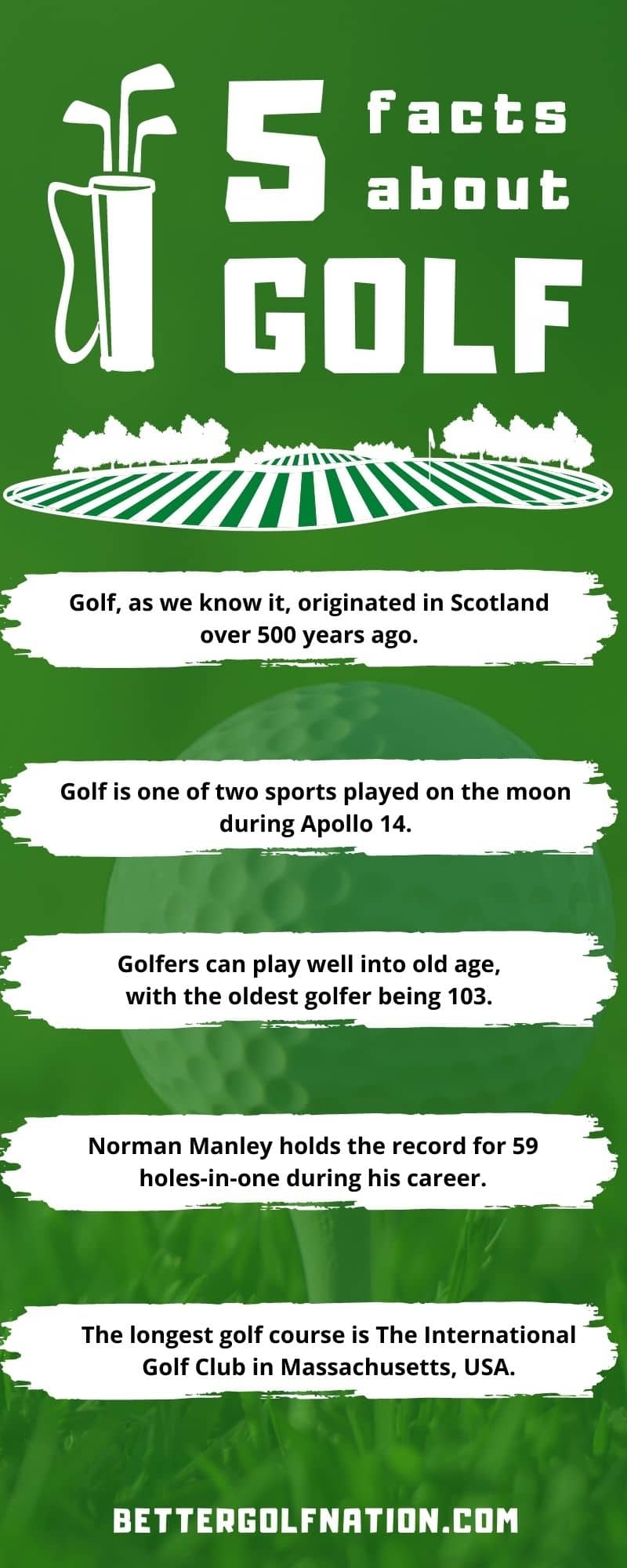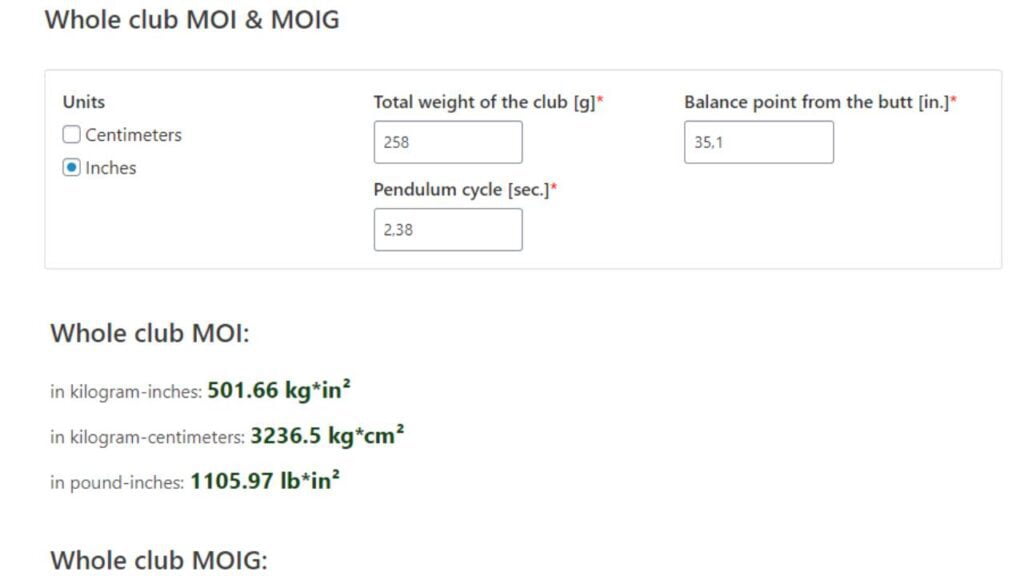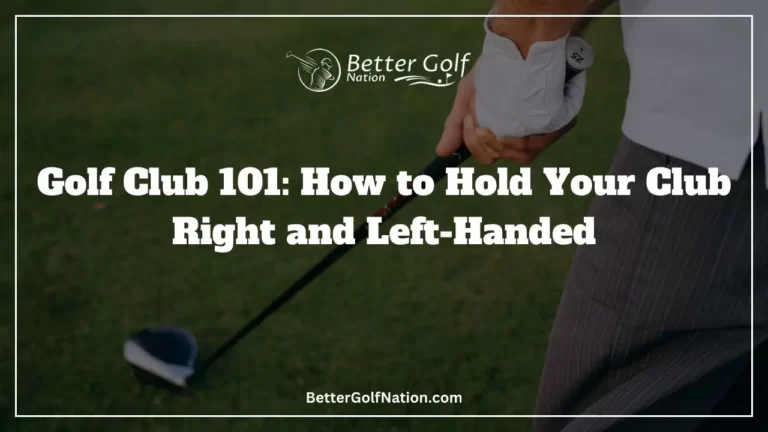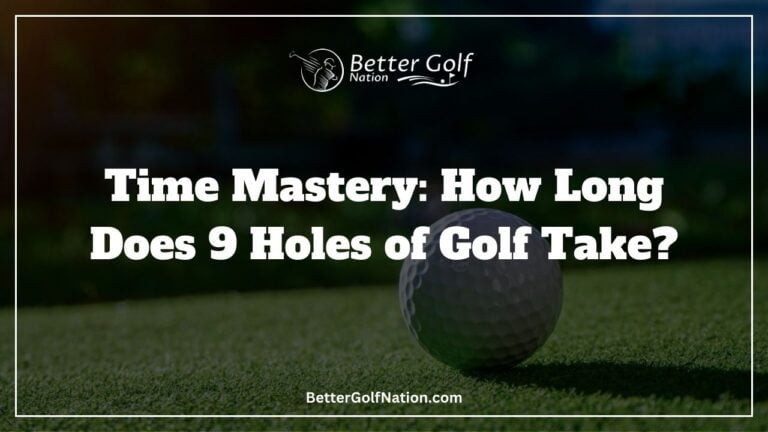Exploring MOI in Golf: A Comprehensive Guide for Beginners
In golf, MOI, or Moment of Inertia, is a key factor in club design that influences a player’s shot accuracy and consistency. It denotes the club’s resistance to twisting upon striking the ball, with a higher MOI resulting in fewer off-center hits, thus promoting straighter and more consistent shots. Primarily determined by weight placement within the club head, understanding MOI can significantly aid in making informed decisions about club selection and customization, leading to a more refined game.
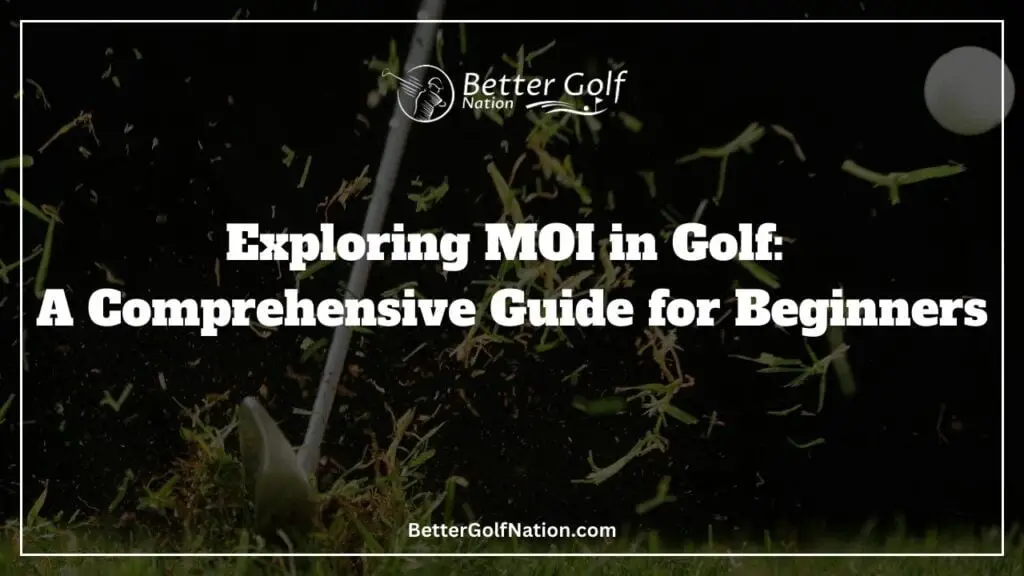
Key Takeaways
- MOI in golf stands for Moment of Inertia, a measure of a clubhead’s resistance to twisting during a swing.
- It enhances forgiveness by reducing mishits’ negative impact.
- Higher MOI clubs offer greater stability and consistency for off-center hits.
- Understanding MOI helps golfers choose equipment that suits their play style and improves overall performance.
- MOI’s impact on shot accuracy and distance makes it a critical factor in club selection and game improvement.
Introduction
One of the most important factors in golf equipment design is MOI, which stands for Moment of Inertia. MOI in golf refers to a measure of a club’s resistance to twisting when it makes contact with the ball. The higher the MOI, the less likely a club will twist on off-center hits. This means that shots hit closer to the sweet spot will be straighter and more consistent.
MOI is especially important for tee shots and long irons because these clubs are typically hit with more force and require more accuracy than shorter irons or putters. Professional golfers are very particular about their clubs’ MOI because they know how much it can affect their performance on the course.
The physics behind MOI in golf can be complicated, but at its core, it comes down to weight placement in the club head. Clubs with low MOI tend to have more weight toward the center of the club face, while high-MOI clubs have more weight distributed around the perimeter of the head.
"MOI in golf refers to a measure of a club's resistance to twisting when it makes contact with the ball. The higher the MOI, the less likely a club will twist on off-center hits. This means that shots hit closer to the sweet spot will be straighter and more consistent."
This affects how much twisting occurs when you make contact with your ball. Expert club fitters often use MOI measurements when fitting golfers for new clubs because they know how much it can affect golf iron distance and accuracy.
Getting custom-fit clubs that have been specifically designed for your swing and playing style can make all the difference on your scorecard. Understanding what is MOI in golf is an essential part of becoming a better player.
It affects everything from your tee shots to your approach shots and can mean hitting straighter shots with greater consistency. By focusing on your club’s weight distribution and getting properly fitted by an expert fitter, you’ll be well on your way to maximizing your potential on the course!
Check out this video below from Golf Warehouse TV‘s Youtube channel:
What Is MOI in Golf?
If you’re new to golf, you might have heard of the term moment of inertia or MOI, but aren’t quite sure what it means.
In simple terms, MOI refers to the resistance a golf club has to twisting during your swing. Think of it like a four-door sedan taking sharp turns; a car with more weight will have tighter turns and less sway than a lighter car. In golf, the same concept applies; clubs with higher MOI have reduced twisting during impact which results in more accuracy and forgiveness on mishits. It’s important to note that MOI doesn’t affect the distance your shot travels- that’s determined by factors such as your swing speed and golf ball contact.
MOI is measured by placing a club on an axis and swinging it like a pendulum. The amount of time it takes for the club to complete its swing is used to calculate its moment of inertia. Clubs with higher moments of inertia require more force to twist and are therefore more resistant during impact. Club balance is key when it comes to understanding how MOI affects different parts of your game.
Drivers with high MOIs are designed for more forgiveness on off-center hits, while low-moi designs offer greater control for those who prioritize accuracy over distance. In the next section, we’ll explore how club design impacts MOI in different types of clubs such as drivers, putters, and irons so you can make an informed decision when choosing your equipment.
Enjoying this article? Read more:
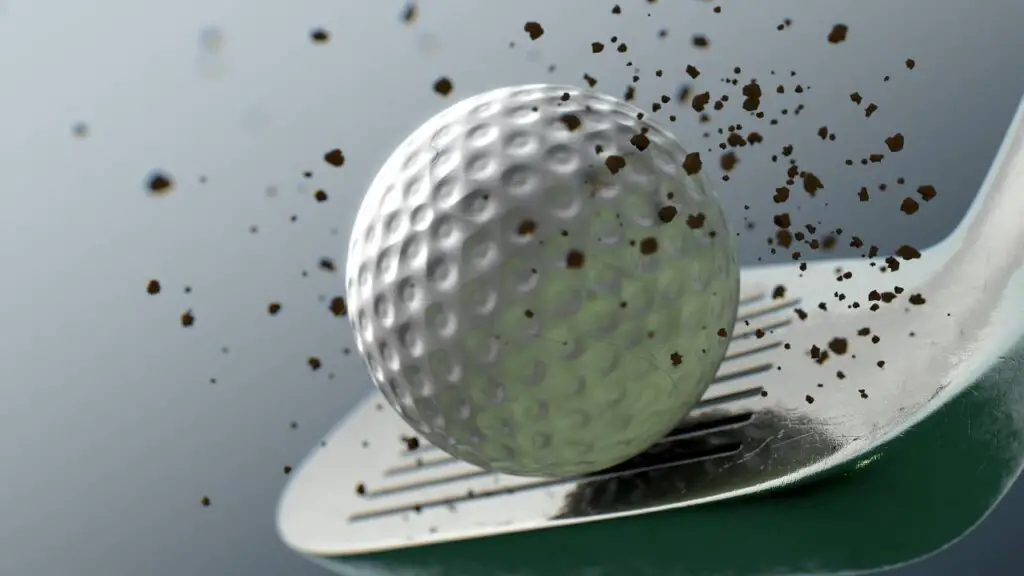
How MOI Is Measured
Let’s dive into how MOI is measured in golf. To determine the MOI of a golf club, the manufacturer uses a special machine that measures the club’s “twistability” when struck off-center. This machine gauges the amount of twisting that occurs when a ball strikes different points on the club face, from toe to heel and from top to bottom. When measuring MOI, manufacturers are looking for two things: mishit resistance and less twisting.
A higher MOI means that the club is more resistant to twisting upon impact with the ball, which can help reduce inaccurate shots caused by mishits. Elite golfers generally prefer clubs with high MOIs because they’re able to make center hits more often than amateur players.
There are several factors that go into determining a golf club’s MOI. The shape and weight distribution of the club head plays a big role in determining its Moment of Inertia.
Manufacturers can manipulate these factors to create clubs with higher or lower MOIs depending on their desired level of mishit resistance or shot-shaping ability. In addition to measuring the MOI of individual clubs, manufacturers also take into account how different types of clubs perform differently based on their MOIs.
For example, irons typically have lower MOIs than drivers because they’re designed for more precise shots where center hits are more common. Understanding how each piece of gear impacts your game can help you make better decisions when selecting your clubs for any given situation on the course!
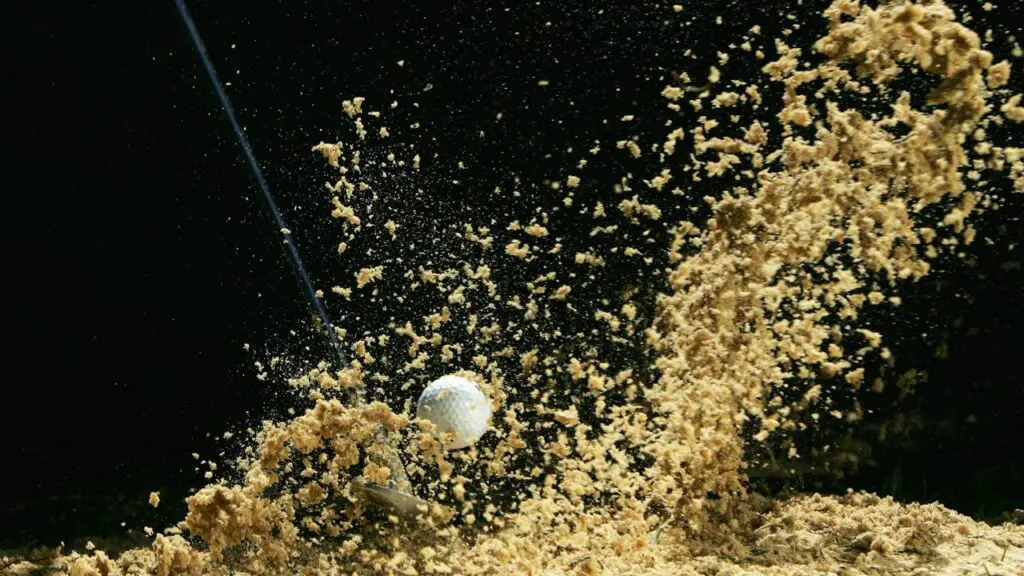
The Physics Behind MOI in Golf
This part can be complicated, but understanding it can give you an edge on the course. MOI stands for moment of inertia, which is a measure of a golf club’s resistance to twisting during the swing. It’s important because it affects how much control you have over the club and, ultimately, the ball.
When you swing a golf club, there’s a lot of force being generated by your body that gets transferred to the clubhead. The clubhead resists this force and tries to twist around its axis.
This twisting can cause the ball to spin off course and lead to less distance and accuracy. But if a club has a high MOI, it will resist that twisting motion more effectively.
This results in less twisting of the clubface at impact and more control over the resulting spin on your shot. That translates into straighter shots with more distance.
"When you swing a golf club, there's a lot of force being generated by your body that gets transferred to the clubhead. The clubhead resists this force and tries to twist around its axis."
Elite golfers understand this concept well, which is why many tour professionals use high-MOI clubs designed for maximum control. As technology has advanced, manufacturers have been able to manipulate MOI in their designs to create clubs with even greater resistance to twisting.
Understanding the physics behind MOI can help you choose better golf clubs and improve your overall game. By selecting clubs with a higher MOI, you’ll be able to keep your shots straighter and more consistent, giving you an edge on the course when it matters most—whether you’re just playing for fun or competing in elite golf championships!
Check out this video below from THP Golf TV‘s Youtube channel:
How MOI Affects the Performance of Golf Clubs
The Moment of Inertia (MOI) is a crucial element that impacts the performance of golf clubs. It primarily determines the stability of the clubhead, influencing the direction and distance of shots, especially those hit off-center.
Key Points:
MOI’s impact on club performance is significant due to its role in weight distribution. Central aspects like the Center of Gravity (CG) and the sweet spot are instrumental in optimizing the ball’s trajectory post-contact.
The CG is a specific point on each clubhead, engineered to enhance performance, while the sweet spot is where the highest speed and distance are achieved.
High-MOI drivers are resistant to twisting during off-center hits, resulting in straighter and farther shots even when the ball is not perfectly centered. This resistance proves beneficial for draws and fades and in windy conditions.
Tour professionals often base their club choices on the desired MOI level, understanding its profound effect on their gameplay.
Modern club technology has allowed manufacturers to alter weight distribution and shape, maximizing MOI while complying with the USGA’s club size regulations.
Understanding MOI’s influence on golf clubs can significantly assist in making informed decisions about the ideal equipment for your game and style. With technology continually evolving, clubs can now offer maximum performance while adhering to game regulations.
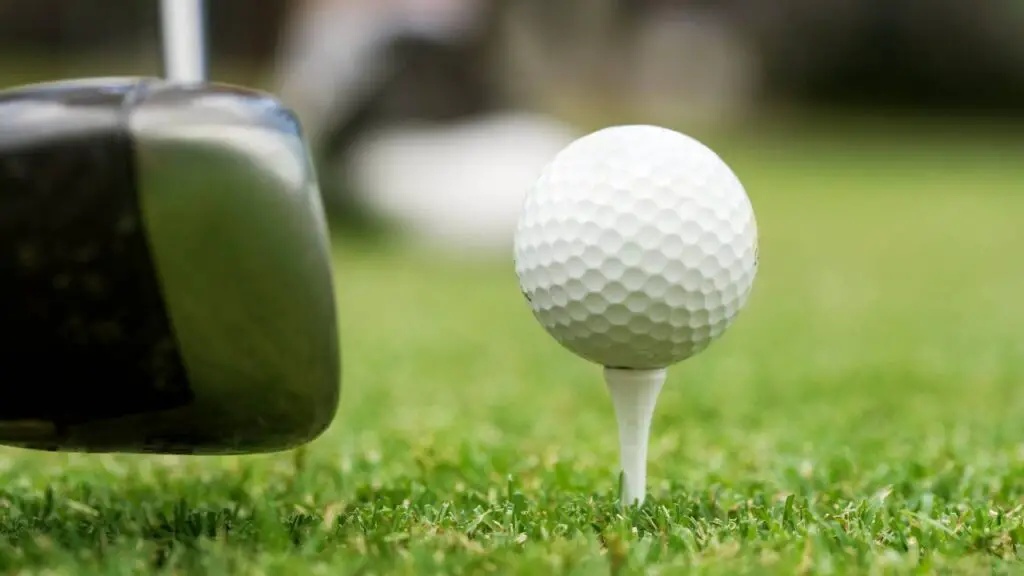
The Relationship Between MOI and Off-Center Hits
Off-center hits are one of the biggest challenges that golfers face. They happen when the ball isn’t struck directly in the center of the clubface, and they can result in less distance, less accuracy, and a lot of frustration for golfers.
But did you know that MOI plays a big role in determining how your club performs on off-center hits? When you hit a golf ball off-center, it creates an imbalance in your swing.
The weight of the club head is no longer distributed evenly around the center axis, resulting in spin and a loss of distance. Clubs with a higher MOI can resist this imbalance more effectively than those with a lower MOI.
This is because high MOI clubs have more weight distributed around their perimeters, which creates a tighter turn radius and reduces the resulting spin. In simpler terms, clubs with a higher MOI are more forgiving on off-center shots because they consistently maximize energy transfer to the ball.
"When you hit a golf ball off-center, it creates an imbalance in your swing. The weight of the club head is no longer distributed evenly around the center axis, resulting in spin and a loss of distance. Clubs with a higher MOI can resist this imbalance more effectively than those with a lower MOI."
This translates into greater distance and accuracy, even if you miss-hit your shot slightly. Golfers who struggle to hit draws or fades should understand how MOI affects their game since it’s all about hitting shots at optimal impact points to produce angular acceleration.
Club design also plays an important role in club forgiveness. Manufacturers use different methods to increase MOI without weighting down every inch of their clubs – often through perimeter weighting technology, which moves weight from central locations to the outer edges, resulting in increased perimeter weighting for better stability across shots.
Understanding how MOI affects off-center hits can help golfers choose better-performing clubs that are suited for their playing level, whether it’s maximizing iron distance or optimizing tee shots with golf drivers. Choosing a club head with a high MOI improves forgiveness and allows players to enjoy greater consistency on every swing—something that’s key if one wants to improve his or her game over time while taking good care on swings and ball contacts.
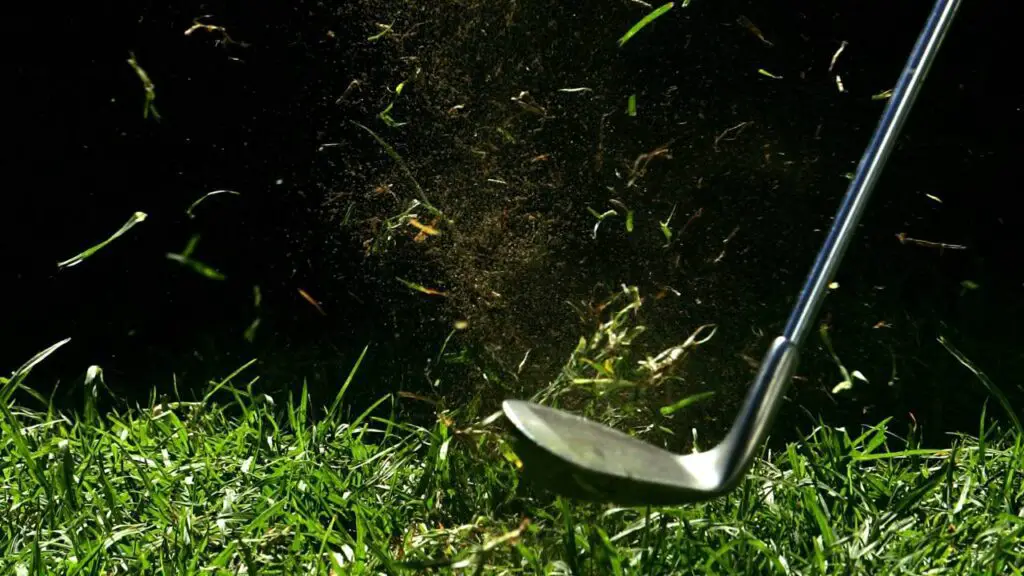
The Role of MOI in the Design of Golf Clubs
When it comes to designing golf clubs, MOI plays a significant role. Club manufacturers have to take into account the effect of MOI on how the club performs and how it feels in a golfer’s hands.
A club’s MOI can impact a player’s ability to hit certain shots, and manufacturers aim to create clubs with the optimal MOI for different types of golfers. One factor that designers consider when creating clubs is the center of gravity (CG).
The CG is the point at which all of a club’s weight is equally distributed. When a club has a low MOI, its CG is positioned closer to the hosel, which means that it will be easier for a golfer to work the ball left or right.
This type of design caters more to elite golfers who want more workability from their clubs and are comfortable hitting draws and fades. On the other hand, high MOI clubs are designed with mishits in mind.
When you don’t hit your shot perfectly on the center of the clubface, high-MOI clubs will minimize twisting and send your ball straighter without as much resulting spin that off-center hits would usually create. These types of designs are often seen in drivers that aim for maximum distance on tee shots by allowing less experienced players to make solid contact regardless of whether they miss towards the toe or heel.
Expert club fitters will work with golfers one-on-one when selecting new equipment based on several factors, including their swing mechanics and personal preferences around what type of shots they’d like help with (for example, hitting draws or fades). Once they understand this information, they’ll use their expertise in matching equipment with individuals based on factors such as swing speed or handicap and can recommend certain models that optimize their ability to achieve particular shots based on each golfer’s unique needs.
"When you don't hit your shot perfectly on the center of the clubface, high-MOI clubs will minimize twisting and send your ball straighter without as much resulting spin that off-center hits would usually create. These types of designs are often seen in drivers that aim for maximum distance on tee shots by allowing less experienced players to make solid contact regardless of whether they miss towards the toe or heel."
When it comes to designing golf clubs that cater to specific players’ needs (whether beginners or PGA tour pros), club manufacturers must take MOI into account. The MOI of a club can impact how it performs and, as a result, the ball distance and golf shots on the green.
Some golfers prefer clubs with a lower MOI because they want to work the ball more, while others are looking for straighter shots with minimal spin-off mishits. By understanding your needs and working with an expert club fitter, you can find a set of clubs that will help you improve your game.
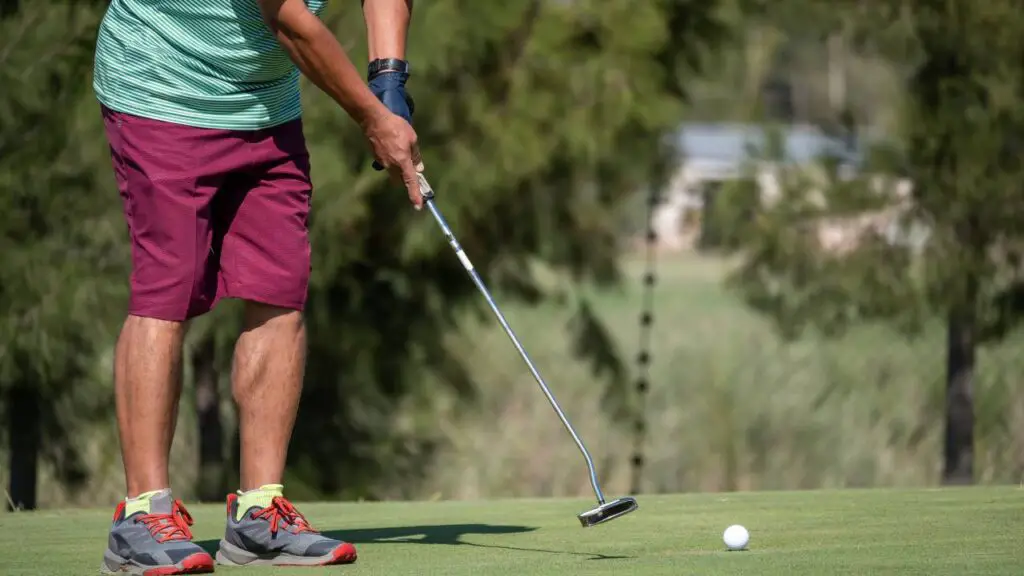
How Club Manufacturers Manipulate MOI
The manipulation of MOI (Moment of Inertia) in golf clubs is a crucial aspect of club manufacturing. MOI plays a significant role in determining a club’s resistance to twisting on off-center hits, thus affecting forgiveness, accuracy, and overall performance. In this section, we will explore the various ways club manufacturers manipulate MOI to optimize golf club performance. Understanding these techniques can help golfers make informed decisions when choosing equipment tailored to their specific needs and preferences.
Ways Club Manufacturers Manipulate MOI:
Shaping the Club Head:
- The shape of the club head directly influences its MOI.
- A more rounded club head typically results in a higher MOI compared to a flatter shape.
- Higher MOI leads to improved forgiveness on off-center hits and enhanced accuracy.
Weight Distribution:
- Club manufacturers can strategically add weight to different parts of the club to influence MOI.
- Perimeter weighting is a common technique where weight is placed around the clubface’s perimeter.
- This increases the MOI, reducing twisting on mishits, and is commonly used in game improvement irons.
Expert Club Fitting:
- Skilled club fitters can tailor a golfer’s equipment to suit their specific needs and tendencies.
- If a player tends to hit fade shots, the fitter may adjust the weight distribution in the clubs to improve accuracy.
Advancements in Club Design:
- Club design has grown increasingly important as manufacturers seek to optimize MOI while adhering to USGA regulations.
- Companies now utilize computer-aided design (CAD) software and advanced manufacturing techniques like 3D printing.
- These technologies allow precise shaping and weight distribution that maximize energy transfer within legal limits.
Understanding how club manufacturers manipulate MOI is a valuable asset for golfers. By selecting clubs with optimal weighting and design features that match their individual needs, players can enhance their performance and experience significant improvements in accuracy and forgiveness. These innovations in club design benefit golfers at all levels, from casual players to PGA tour professionals. As manufacturers continue to push the boundaries of club technology, the game of golf evolves, making it an exciting time for golf enthusiasts worldwide.
Check out this video below from GOLFTEC‘s Youtube channel where they talk about Moment of Inertia:
The Concept of Perimeter Weighting
When it comes to MOI in golf, perimeter weighting is crucial. Essentially, perimeter weighting refers to the distribution of weight around the edges, or perimeter, of a golf club. This type of weight distribution can have a significant impact on a club’s MOI and its overall performance.
Perimeter weighting is designed to maximize mishit resistance by reducing twisting and increasing forgiveness. As we all know, even the best golfers in the world don’t hit perfect shots every time.
Mishits are inevitable, but by distributing weight around the perimeter of a clubhead, manufacturers can help mitigate their impact on your game. Expert club fitters often use perimeter weighting as a means of shaping your golf stroke.
By placing more weight on the heel or toe, they can help you achieve more draw or fade bias in your shots. They may also adjust your irons with different levels of perimeter weighting depending on your skill level and style of play.
Club design plays an essential role in achieving proper perimeter weighting. Manufacturers use computer simulations and other advanced techniques to determine how best to distribute weight around each individual clubhead for optimal performance.
The goal is always to create a higher MOI for reduced twisting and better mishit resistance. Overall, understanding the concept of perimeter weighting is key to understanding how MOI works in golf clubs.
By distributing weight around the edges of a clubhead and reducing twisting during mishit shots, manufacturers can improve performance across their entire golf iron set or other types of clubs. Whether you’re getting fit by an expert club fitter or simply shopping for new clubs off the shelf, it’s important to consider how perimeter weighting may impact your game before making any decisions.
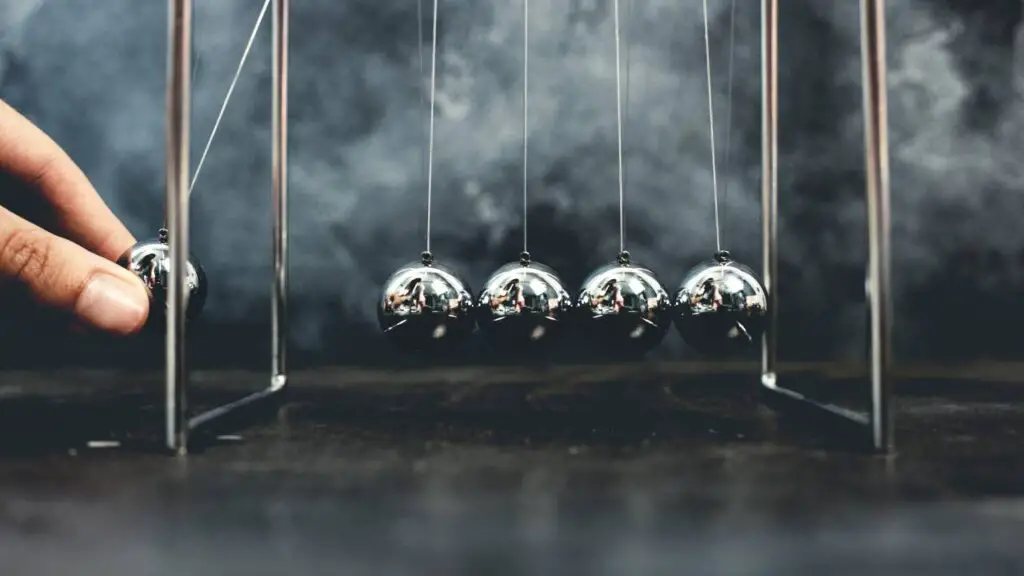
The Impact of Club Design on MOI
The design of golf clubs has a significant impact on MOI. Manufacturers have long been experimenting with different club shapes and materials in order to increase the MOI of their clubs and thus improve their performance on the greens. One way they do this is by shaping the club heads in such a way that they are less prone to twisting upon impact with the ball.
Reduced twisting is critical when it comes to center hits. When a golfer hits the sweet spot of a club, i.e., its center point, there is minimal twisting of the clubhead.
This results in increased angular acceleration, which ultimately leads to increased distance and accuracy. By contrast, off-center hits can cause significant twisting of the club head, which can reduce ball speed and distance.
Newer drivers are designed with larger heads that help improve their MOI. The larger head means more weight is distributed around its perimeter, giving it greater stability upon impact with the golf ball.
The result is fewer mishits and improved accuracy, even when hitting draws and fades. Club stability depends heavily on driver design as well as many other factors like swing speed or golf iron distance, but it also affects MOI significantly.
A driver with a higher MOI will offer more forgiveness on off-center hits than one with a lower MOI, so finding a driver that has good stability is crucial for those looking to improve their game. Manufacturers are constantly working to make golf clubs with higher MOIs through modifications in head shaping or material usage in order to improve performance for players at all levels of play, from beginners learning how to hit higher irons to stopping golf balls on greens all the way up to top-level professionals competing in major championships around the world.
Check out this video below from GOLFTEC‘s Youtube channel where they test MOI with TaylorMade drivers:
MOI in Different Types of Golf Clubs
Exploring the Moment of Inertia (MOI) in golf requires understanding its significance in various types of clubs, each carrying unique characteristics. MOI’s influence differs across drivers, putters, and irons, as it is intimately linked to their size, weight distribution, and the specific role they play on the course. In the following sections, we’ll delve into the importance and optimization of MOI in drivers, why MOI is crucial in putters and how it’s achieved, and the impact of MOI on irons, explaining why professionals often favor low-MOI irons.
MOI in Drivers: Importance and How It’s Maximized
When it comes to golf drivers, MOI is crucial for determining ball-striking performance. A high MOI driver resists twisting on off-center shots, ensuring more consistency and distance. While high MOI drivers prioritize forgiveness over shot shaping, newer models combine forgiveness with improved workability.
Club designers maximize MOI using techniques like lightweight materials and perimeter weighting. Finding the ideal driver depends on factors such as swing speed, skill level, and play style. Beginners may benefit from high MOI drivers, while professionals often prefer low-MOI options for greater shot control and trajectory shaping. Understanding MOI in drivers can optimize your game performance.
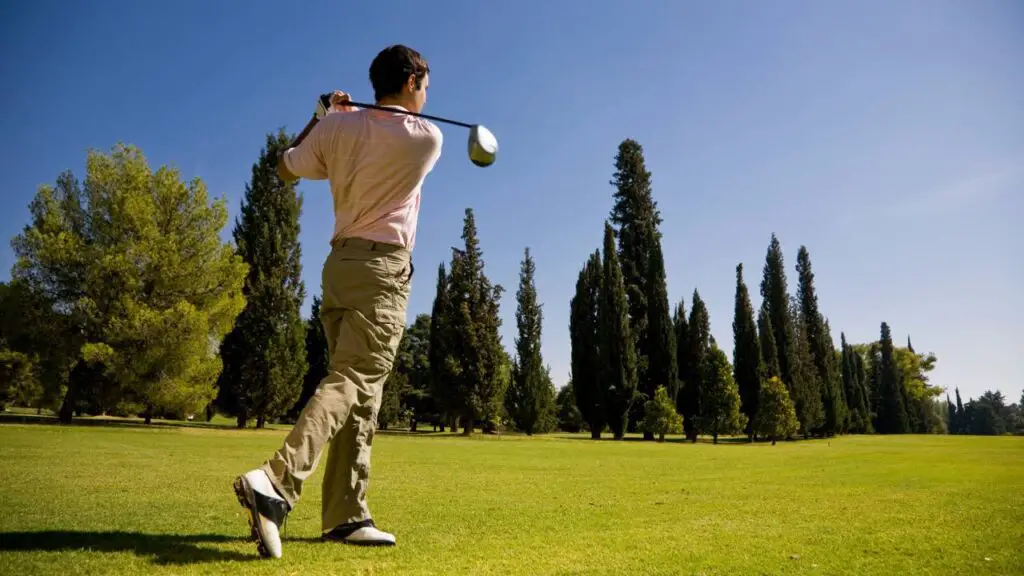
MOI in Putters: Why It’s Crucial and How It’s Achieved
MOI is just as crucial for putters as it is for any other golf club. A high MOI putter resists twisting upon impact, ensuring a straighter and more accurate shot towards the hole. This increased stability leads to consistent putts, improving the chances of sinking those critical shots.
Putters with a larger sweet spot and optimized weight distribution offer higher MOI. This means they’re more forgiving on off-center hits, reducing the chances of your putt going off course. Professional golfers rely on high MOI putters for their mishit resistance and accuracy, and advancements in club technology have made them essential even for amateurs.
Having a high MOI putter can significantly improve your putting game, whether you’re playing with friends or competing at a professional level. Invest in a high-MOI putter and witness the difference in your putting accuracy on the greens.
MOI in Irons: How It Affects the Game and Why Professionals Prefer Low MOI Irons
MOI is a critical factor to consider in irons, just like in drivers and putters. It influences the clubhead’s response to off-center hits and determines the level of forgiveness the club offers.
Skilled players often opt for low MOI irons as they prioritize control over ball flight and shot shape. These irons have a smaller sweet spot due to less weight distributed around the clubhead perimeter. While mishits may result in more spin and less distance compared to high MOI irons, skilled players can manipulate their shots and prefer to play with fades or draws.
Professional golfers often choose sleek cavity-back designs that balance forgiveness with shot-shaping ability. These designs distribute weight to increase MOI without compromising workability. Customization options like adjustable weighting further allow players to fine-tune their iron sets based on their preferences.
In PGA Tour events and other golf competitions, many professionals opt for low MOI irons because they prioritize shot control over pure distance. Understanding MOI is crucial when selecting golf equipment, as high MOI clubs may offer extra forgiveness but sacrifice shot-shaping capabilities that skilled players value.
Low MOI irons provide maximum control over golf ball contact, resulting in optimal spin rates and distances for various types of swings, making them a preferred choice for those seeking precision and consistency in their game.
Check out this video below from GolfWRX‘s Youtube channel:
The USGA Limit for MOI
The USGA, or United States Golf Association, is the organization responsible for setting the rules and regulations for golf in the United States. The USGA sets a limit on the MOI of golf clubs to ensure fairness in competitions.
The maximum MOI allowed by the USGA is 5,900 g/cm². This limit applies to all types of golf clubs, including drivers, putters, and irons.
Club manufacturers must adhere to this limit when designing and producing their clubs. This ensures that no player gains an unfair advantage by using a club with an excessively high MOI.
The limit is based on extensive research and testing. It takes into account factors such as club balance, weight distribution, and face impact dispersion.
By limiting the maximum MOI of golf clubs, the USGA ensures that players can compete fairly and that the game remains challenging and enjoyable for all skill levels. Understanding the USGA limit for MOI can be helpful when choosing new golf clubs or upgrading your existing set.
It can help you select clubs that are within regulation limits while still providing you with the correct distance, hitting draws and fades, tighter turns, or more forgiving shots when needed on course. Additionally, some sleek cavity-back designs have been developed to cater to this need, which helps produce a high moment of inertia shot while maintaining the correct distance, thus making it easier for even amateurs to hit straighter shots with less effort!
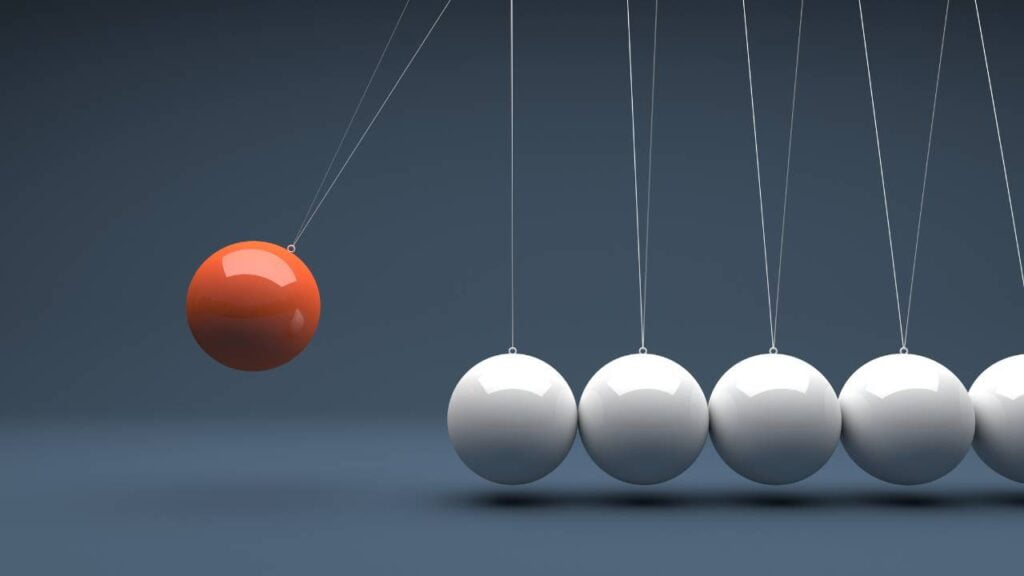
How Manufacturers Adhere to This Limit
When it comes to adhering to the USGA limit for MOI in golf clubs, manufacturers have a few different approaches. Some companies opt for low-MOI designs, which prioritize stability and mishit resistance over maximizing energy transfer.
These clubs are typically favored by professional golfers and experienced players who prioritize control over distance. Other manufacturers choose to maximize energy transfer by increasing the MOI of their clubs, which can result in more forgiveness on imperfect strikes.
Many club manufacturers use what’s known as perimeter weighting to adjust MOI in their club designs. This involves redistributing weight around the perimeter of the clubhead in order to increase its resistance to twisting on off-center hits.
"Some companies opt for low-MOI designs, which prioritize stability and mishit resistance over maximizing energy transfer. These clubs are typically favored by professional golfers and experienced players who prioritize control over distance. Other manufacturers choose to maximize energy transfer by increasing the MOI of their clubs, which can result in more forgiveness on imperfect strikes."
By increasing MOI in this way, manufacturers are able to create more forgiving drivers and irons that can help amateur golfers hit straighter shots more consistently. Of course, adhering to the USGA limit for MOI is just one aspect of designing effective golf clubs.
Manufacturers must also consider factors like size, shape, and driver technology when creating new products. Ultimately, a club’s ability to maximize energy transfer while still maintaining stability will depend on a variety of factors beyond just its MOI.
Overall, understanding how manufacturers adhere to the USGA limit for MOI can help golfers make more informed decisions when it comes time to select new equipment. Whether you prefer low-MOI blade irons or high-MOI drivers that are mishit-friendly, there are plenty of options available in today’s golf world thanks to advancements in club customization and design techniques like perimeter weighting.
The Impact of MOI on Your Golf Game
This is significant. If you are a beginner or a high-handicap golfer, a high MOI club can be very beneficial.
It provides more stability at impact, reducing the chances of mishits and increasing accuracy. High MOI clubs tend to be more forgiving on off-center hits, making them a great choice for those who need additional help with their ball distance and direction.
On the other hand, if you are an advanced player looking for more control over your shots, low MOI clubs might be the way to go. These clubs require greater precision in your swing but can provide more control over the ball’s trajectory and spin.
PGA Tour pros often choose low MOI clubs because they have learned how to hit their shots consistently well. One thing to keep in mind is that while high MOI clubs may be mishit-friendly, they may not necessarily offer the correct distance or feel as satisfying when struck correctly.
This factor is why club customization is critical; it allows individual players to find the right balance between high and low MOIs that work best for their unique swing styles. Understanding how MOI affects your golf game is essential if you want to improve as a player.
Whether you opt for high or low Moi golf club designs ultimately depends on your skill level and preferences. Consider getting a custom fit by a professional fitter who understands how Moi impacts all aspects of golf club design so that you can make informed choices regarding what’s right for you on the course—much like buying a four-door sedan with specific features that suit your driving style!
Enjoying this article? Read more:
For those interested in measuring the Moment of Inertia of their golf clubs and gaining insights into how they perform on the course, there’s a helpful tool available: the MOI calculator from golf.okrasa (screenshot below), which I have personally used before. By utilizing this user-friendly calculator, you can gain a better understanding of how MOI influences your golf game and make informed club selections accordingly. Click here to access the MOI calculator
How Understanding MOI Can Improve Your Game
Understanding MOI in golf is crucial if you want to improve your game. With the knowledge of MOI, you will be able to choose the right clubs that fit your swing and play style.
One way that understanding MOI can help improve your game is by allowing you to select clubs with the right amount of weight distribution. A well-distributed clubhead weight can lead to improved stability at impact and precision in shot-making.
Another way understanding MOI can help improve your game is by enabling you to select the right driver for long-distance tee shots. Newer drivers are equipped with technology that maximizes MOI, resulting in longer, straighter, and more consistent drives.
"One way that understanding MOI can help improve your game is by allowing you to select clubs with the right amount of weight distribution. A well-distributed clubhead weight can lead to improved stability at impact and precision in shot-making."
Understanding how this technology works and what it means for your driving distance can help you make an informed decision when selecting a driver. A low MOI driver, on the other hand, can work well for players who prefer hitting a draw or have trouble keeping their shots on target due to excessive angular acceleration.
When selecting irons, high-MOI designs are great for forgiveness on off-center hits, while low-MOI designs allow professionals to manipulate shot shape easily. Understanding how different types of clubs use or don’t use MOIs will give you valuable insights into how they perform in different situations.
Understanding MOI in golf and its impact on club performance can go a long way toward improving your game. While it might not be as important as proper technique or good course management, knowing how different clubs perform based on their weight distribution can give a golfer an edge over their competition when they need it most—especially when precision matters most!
The Role of MOI in Club Selection
When choosing a golf club to use, it’s important to consider the role MOI plays in your selection. MOI can have a significant impact on the way your golf strokes turn out, so it’s worth paying attention to. One of the main ways that MOI affects club selection is through its influence on weight distribution.
Clubs with a higher MOI tend to have more weight towards the perimeter of their heads, which can make them more difficult to control but provide greater mishit resistance. For players who prioritize accuracy over distance, clubs with a higher MOI may be preferable.
This is because they’re less likely to twist or turn upon impact with the ball, meaning that shots are more likely to land where you’re aiming them. However, if you’re looking for maximum ball distance and aren’t too concerned about precision, a lower MOI club might be better suited for your needs.
The weight of a particular club is also influenced by its MOI value. Some players prefer heavier clubs as they feel they provide greater energy transfer and control over their strokes.
However, others may feel that lighter clubs allow for smoother swings and generate greater angular acceleration at impact. Ultimately, the decision about whether or not to choose a heavier or lighter club comes down to personal preference and playing style; both options have their own advantages and disadvantages depending on what you’re looking for in terms of performance on the course.
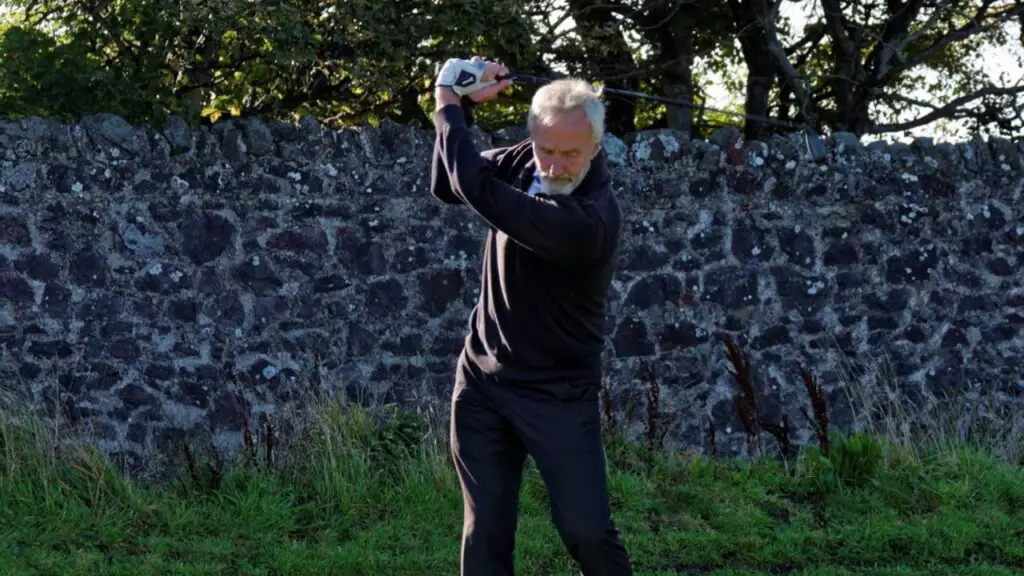
Conclusion
MOI is an important concept to understand in golf, especially when it comes to the performance of your golf clubs.
By understanding MOI, you can make more informed decisions when it comes to selecting the right gear for your game. One major way that MOI impacts your game is through consistency.
Golfers who use clubs with a higher MOI will generally experience a more consistent ball flight and better accuracy because the club face will twist less on mishits. In addition, skilled players may prefer lower MOI irons because they offer more control and shot-shaping options.
It’s also worth noting that modern driver technology has allowed manufacturers to maximize MOI while still keeping the club within USGA limits. This has resulted in straighter drives and improved distance for many golfers.
However, it’s important to remember that while a high MOI can help reduce twisting on off-center shots, it won’t completely eliminate them. Proper golf strokes and solid golf ball contact are still key components of hitting quality golf shots.
Overall, understanding the impact of MOI in golf can help you improve your game by selecting gear that suits your needs and provides greater consistency in your shots. Whether you’re a beginner or an experienced player, taking some time to learn about this vital concept can pay dividends on the course.
FAQs
What is MOI in golf?
MOI in golf stands for Moment of Inertia, determining the club’s resistance to twisting when struck off-center, enhancing shot consistency.
Why is MOI important?
MOI, or Moment of Inertia, is critical as it impacts the stability of golf clubs during a swing and influences the accuracy and forgiveness of off-center hits.
What does MOI mean for a driver?
For a driver, MOI refers to how much the clubhead resists twisting on impact. A higher MOI implies more forgiveness for off-center hits, enhancing shot consistency.
What is a high MOI in golf?
A high MOI in golf indicates that a clubhead is more resistant to twisting when hit, providing more forgiveness on off-center strikes and better overall performance.
What is a low MOI in golf?
A low MOI in golf implies that the clubhead has less resistance to twisting, often resulting in less accuracy and forgiveness on off-center hits. Such clubs may be harder to control but could provide more feedback to skilled players.
What is the difference between high MOI and low MOI?
The difference between high MOI and low MOI lies in clubhead stability. High MOI offers more resistance to twisting and better forgiveness on mis-hits, while low MOI offers less.
How do you increase MOI in golf?
Increasing MOI in golf typically involves adding weight to the perimeter of the clubhead, making it more resistant to twisting and improving shot consistency and accuracy.
What happens if MOI is too high?
If MOI is too high, the golf club may feel heavier and more challenging to swing. However, it does provide greater resistance to twisting, improving accuracy on off-center hits.
What are the factors affecting MOI?
Factors affecting MOI include clubhead design, weight distribution, and the material used in the club’s construction. Perimeter weighting, in particular, can significantly increase MOI.
What does a high MOI putter mean?
A high MOI putter indicates that the putter is more stable and resistant to twisting, offering better accuracy and control, especially on off-center hits.
Share this Post
Toni Benedito
Keep Reading
Follow Us
Recent Posts

How Do Pro Golfers Get Paid? The Business of Golf
Professional golfers get paid both before and after tournaments. Before a tournament, they receive appearance fees, sometimes exceeding $1 million, to attract top players. After the tournament, earnings depend on their placement, with the PGA

How Much Do Golf Players And Pros Make? You Won’t Believe It!
Professional golfers earn substantial incomes through tournament winnings, sponsorship deals, and endorsements. Top players on the PGA Tour can make millions annually, with significant earnings from prize money and lucrative brand partnerships. For example, Rory

The Shocking Cost: How Much Does It Cost to Fly with Golf Clubs?
Flying with golf clubs can be a hassle, but it’s worth it for avid golfers. Costs vary by airline, ranging from $30 to $150 per way. Southwest Airlines offers a generous policy, allowing one set

Why Do Golfers Tape Their Fingers Before Hitting the Course?
Golfers tape their fingers to prevent injuries from repetitive motions, provide support for existing injuries, and improve grip comfort. It’s a popular technique among amateurs and pros alike, offering a lightweight and effective solution compared

How Much Does a Round of Golf Cost? Are You on Par?
The cost of a round of golf varies widely based on factors like course type, location, and time of play. Public courses typically range from $30-$100 per round, while exclusive ones like Augusta National or

Hidden Fees: How Much Does It Cost To Rent a Golf Cart
Wondering how much it costs to rent a golf cart? Explore factors like location, rental duration, and cart type impacting prices. Daily rates range from $50 to $80, while weekly rentals can vary from $200
Table of Contents
